Authors:
ABSTRACT
Aim
To evaluate the short-term follow-up outcome in four subgroups of uncooperative child dental patients referred to a
specialist paediatric dental clinic in Sweden.
Methods
Seventy children, classified into four groups (based on fear, temperament,
behaviour and verbal intelligence), were followed-up at their public dental clinics after termination of specialist dental treatment.
Questionnaire assessments of children's dental and general fear, parental dental fear, emotional stress, locus of control and parenting
efficacy were made by parents pre and post treatment and at follow-up and were analysed within and between groups. At follow-up,
parents rated their children's coping and procedure stress, while treatment acceptance was rated by the dentists.
Results
Decreases
in child dental fear were maintained at follow-up, although a third of children still had moderate or high dental fear. For those children
who had been classified into the externalising, impulsive group, an increased risk of non-acceptance (RR=3.7) was indicated. The risk of
dental fear at follow-up was increased for the group of fearful, inhibited children (RR=3.8). For the study group as a whole a poorer
follow-up outcome could be predicted by avoidance behaviour (OR 12.9-16.6) and moderate or high post treatment dental fear (OR 6.5-
21.3). CONCLUSIONS: Fearful, inhibited child dental patients may need, due to dental fear, extra attention even after successful dental
treatment at a specialist clinic. Externalising, impulsive children constitute a special challenge for dentistry. The continued need for
adjusted management after termination of specialist treatment can be predicted from avoidance behaviour and post treatment dental
fear scores.
PLUMX METRICS
Publication date:
Keywords:
Issue:
Vol.5 – n.4/2004
Page:
Publisher:
Cite:
Harvard: K. Arnrup, U. Berggren, A. G. Broberg, L. Bodin (2004) "A short-term follow-up of treatment outcome in groups of uncooperative child dental patients", European Journal of Paediatric Dentistry, 5(4), pp216-224. doi:
Copyright (c) 2021 Ariesdue

This work is licensed under a Creative Commons Attribution-NonCommercial 4.0 International License.
